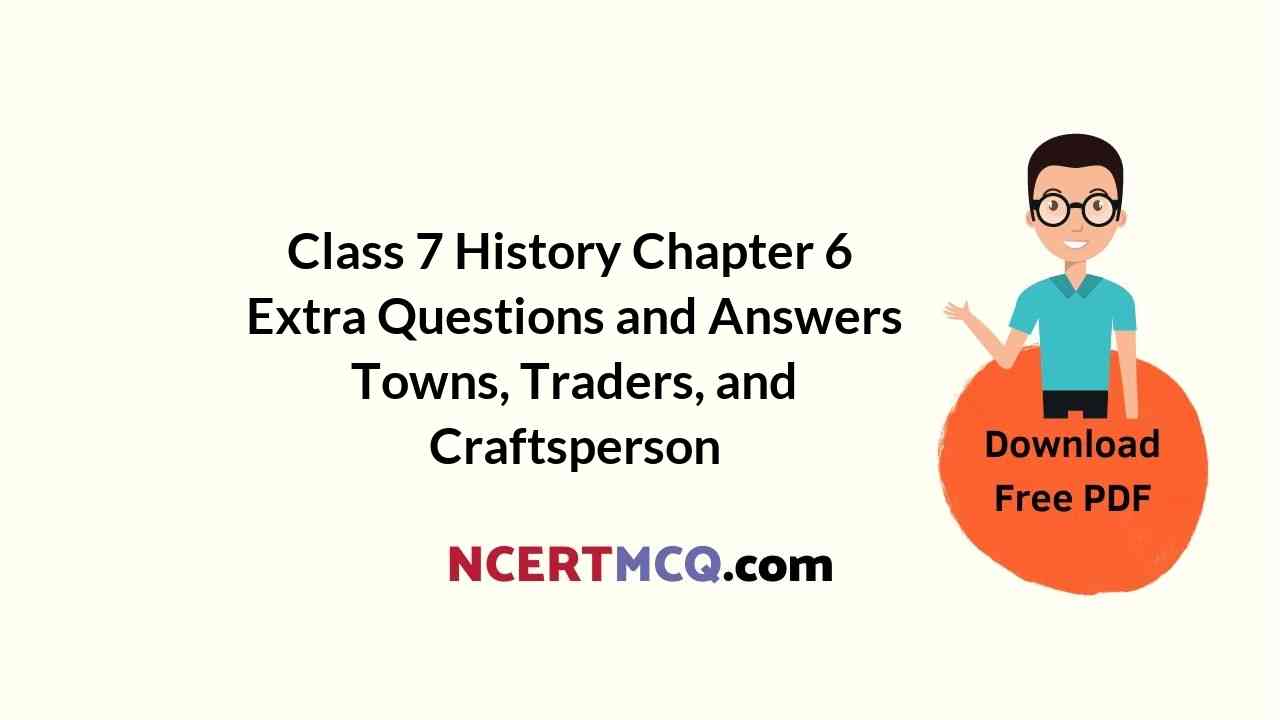Here we are providing Online Education for Class 7 History Chapter 7 Extra Questions and Answers Tribes, Nomads and Settled Communities was designed by subject expert teachers. https://ncertmcq.com/extra-questions-for-class-7-social-science/
Online Education for Tribes, Nomads and Settled Communities Class 7 Extra Questions History Chapter 7
Class 7 History Chapter 7 Extra Questions And Answers Question 1.
Name a Himalayan tribe.
Answer:
The Himalayan shepherd tribe is Gaddi.
Tribes Nomads And Settled Communities Extra Questions Question 2.
Tribes of which areas adopted Islam as their religion.
Answer:
Many tribes of Punjab, Sind and the North-West Frontier adopted Islam as their religion.
Class 7 History Ch 7 Extra Questions Question 3.
What was the name of the son of Rani Durgawati?
Answer:
The name of the son of Rani Durgawati was Bir Narain.
Tribes Nomads And Settled Communities Class 7 Extra Questions Question 4.
Which Mughal general attacked Garh Katanga?
Answer:
Asaf Khan attacked Garha Katanga.
![]()
Ncert Class 7 History Chapter 7 Extra Questions Question 5.
Which Mughal general attacked Ahoms?
Answer:
Mir Jumla attacked Ahoms.
Extra Questions For Class 7 History Chapter 7 Question 6.
Which Gond king assumed title of Sangram Shah?
Answer:
Aman Das, the Gond raja of Garha Katanga assumed the title of Sangram Shah.
Class 7 History Chapter 7 Extra Questions Question 7.
How was Ahom society divided?
Answer:
Ahom society was divided into clans or khels.
Class 7th History Chapter 7 Extra Questions Question 8.
What was meant by the tribal societies?
Answer:
The societies which did not follow the social rules and rituals prescribed by the Brahmanas and which were not divided into numerous unequal classes were called tribal societies.
History Class 7 Chapter 7 Extra Questions Question 9.
How do we come to know about tribal societies?
Answer:
- The tribal societies did not keep written records. But they preserved rich customs and oral traditions.
- These were passed down to each new generation.
- Historians used these oral traditions to know about tribal societies.
Chapter 7 History Class 7 Extra Questions Question 10.
Describe the administrative system of Gonds.
Answer:
- The administrative system of Gonds was centralised.
- The kingdom was divided into garhs.
- Each Garh was controlled by a particular Gond clan.
- This was, further, divided into units of 84 villages called chaurasia.
- The chaurasia was subdivided into harlots which were made up of 12 villages each.
Class 7 History Tribes Nomads And Settled Communities Extra Questions Question 11.
What were the main features of tribal societies?
Answer:
The tribal societies had the following features :
- Members of each tribe were united by kinship bonds.
- Many tribes obtained their livelihood from agriculture. Others were hunter-gatherers or herders.
- Most often tribesmen combined these activities to make full use of the natural, resources of the area in which they lived.
- Some tribes were nomadic and moved from one place to another.
- A tribal group retained land and pastures jointly and divided these amongst households according to its own rules.
![]()
History Chapter 7 Class 7 Extra Questions Question 12.
What did different tribes do?
Answer:
The different tribes used to do following activities :
- Many pastoral tribes reared and sold animals such as cattle and horses to the prosperous people.
- Different castes of petty pedlars also travelled from village to village.
- They made and sold wares such as ropes, reeds, straw matting and coarse sacks.
- Sometimes mendicants acted as wandering merchants.
- There were castes of entertainers who performed in different towns and villages for their livelihoods.
Multiple Choice Questions (MCQs)
1. Which one of the following is a Himalayan tribe?
(a) Khokhar
(b) Gaddis
(c) Gakkhars
(d) Santa 1
Answer:
(b) Gaddis.
2. Which of the following are Rajput clans?
(a) Hunas
(b) Chandelas
(c) Chalukyas
(d) All of them.
Answer:
(d) All of them.
3. Mainly in which areas did tribes adopt Islam as their religion?
(a) Punjab
(b) Sind
(c) The North-West Frontier
(d) All of these.
Answer:
(d) All of these.
![]()
4. Who was the son of Rani Durgawati?
(a) Bir Narain
(b) Gangadhar Rao
(c) Todar Mai
(d) Sangram Shah
Answer:
(a) Bir Narain.
5. The name of Mughal general who attacked Garh Katanga was.
(a) General Dyre
(b) Asaf Khan
(c) Kamal Khan
(d) Mir Jumla
Answer:
(b) Asaf Khan.
6. Which one of the following Mughal generals attacked Ahoms?
(a) Mir Jumla
(b) Asaf Khan
(c) Raja Man Singh
(d) Both (a) and (b).
Answer:
(a) Mir Jumla.
7. Which Gond king assumed title of Sangram Shah?
(a) Kamal Khan
(b) Aman Das
(c) Raja Man Singh
(d) Both (a) and (b).
Answer:
(b) Aman Das.
![]()
8. How was Ahom society divided?
(a) Ahom society was divided into three subcastes.
(b) Ahom society was divided into rich and poor.
(c) It was divided into clans or khels.
(d) It was divided into whites and blacks.
Answer:
(c) It was divided into clans or khels.
9. Against whom did Rani Durgawati fight in 1565?
(a) Maratha forces
(b) Mughal forces
(c) French forces
(d) The Banjara king.
Answer:
(b) Mughal forces.
10. Who was Rani Durgawati?
(a) Rani of Jhansi
(b) Rani of Kashi
(c) Rani of Garha Katanga
(d) Rani of Kannauj
Answer:
(c) Rani of Garha Katanga.
Important Years Or Periods:
1523 Ahoms annexed the kingdom of Chhutiyas.
1565 The Mughal forces under Asaf Khan attacked Garha Katanga. Rani Durgawati opposed them.
1581 Ahoms annexed the kingdom of Koch Hajo.
1591 Raja Man Singh, Akbar’s famous general attacked and defeated the Cheers of Bihar.
1662 The Mughals under Mir Jumla attacked the Ahom kingdom of Assam.
Important Terms:
→ Clan: A clan is a group of families or households claiming descent from a common ancestor.Tribal organisation is often based on kinship or clan loyalties.
→ Nomads and itinerant groups: Nomads are wandering people. Many of them are pastoralists who roam from one pasture to another with their flocks
